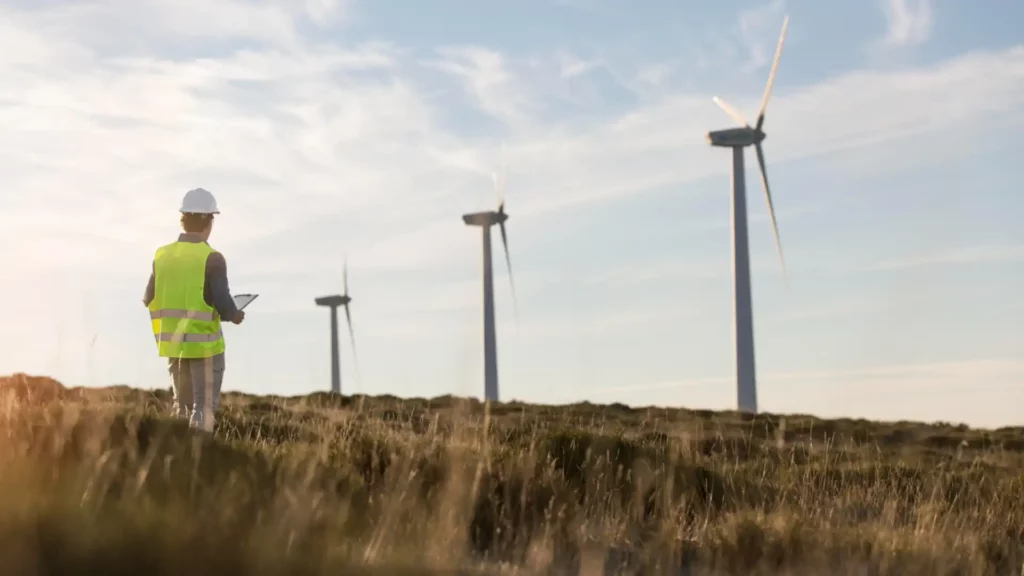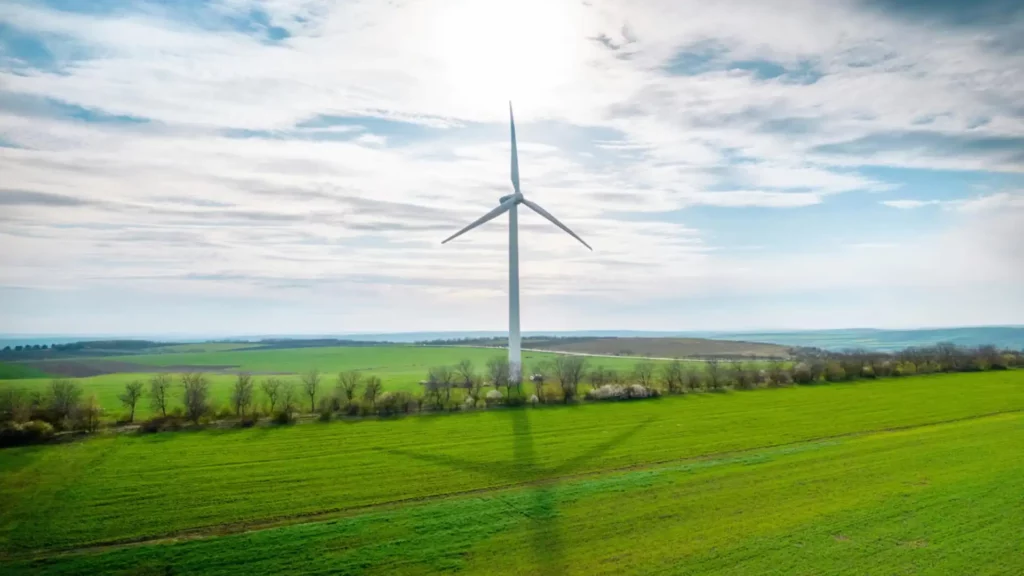Ireland, a country known for its picturesque landscapes, vibrant culture, and dynamic weather, is making significant strides in the realm of renewable energy, particularly wind energy.
The potential for Wind Energy in Ireland is vast, and its exploration and exploitation are pivotal for the country's future of renewable energy.
This comprehensive guide dives deep into the world of wind energy in Ireland, examining its current state, the benefits, challenges, and future prospects that this green energy source holds for the Emerald Isle.
The Evolving Landscape of Wind Energy in Ireland
Wind Energy in Ireland has embarked on an extraordinary path of expansion and advancement over recent decades, solidifying its position as a cornerstone of the nation's renewable energy strategy.
Ireland's strategic geographical advantage offers an abundant supply of wind resources, catapulting it into the forefront of wind energy production on a per capita basis among European countries.
Unprecedented Growth and Supportive Frameworks
Ireland's wind energy growth is a result of government support, progressive policies, and a societal shift towards renewable resources to combat climate change. This commitment has led to an increase in installed wind energy capacity.
- Government Initiatives: Implementing policies that incentivize wind energy development, including subsidies, feed-in tariffs, and streamlined approval processes for new projects.
- Technological Advancements: Adoption of cutting-edge turbine technologies has enhanced efficiency and output, enabling more power to be generated from the same wind resources.
- Public and Private Investments: Significant investments from both sectors have facilitated infrastructure improvements and the expansion of wind farms across Ireland.

Installed Capacity: A European Leader
As per the most current data available, Ireland's installed wind energy capacity is not just impressive but positions the nation as a leader in wind power generation per capita across Europe. This achievement is characterized by:
- Wide Distribution: The capacity is spread out through a mix of onshore and offshore wind farms, harnessing the country's diverse wind profiles.
- Strategic Investments: Continued investment in wind energy infrastructure has expanded Ireland's capacity to generate clean, renewable energy.
- Innovation in Technology: The adoption of larger, more efficient turbine models has contributed significantly to the increase in installed capacity.
Significant Contribution to the Energy Mix
Wind energy's role in Ireland's energy landscape is pivotal, accounting for a significant share of the nation's total electricity production. This contribution underscores not only the importance of wind energy in Ireland but also its vast potential for future energy generation. Key points include:
- Renewable Energy Milestones: Wind energy has enabled Ireland to reach and exceed various renewable energy milestones, setting an example for renewable integration globally.
- Grid Integration: Innovations in grid management and energy storage are helping to maximize the utility of wind energy, ensuring a stable and reliable power supply.
- Economic and Environmental Impact: The expansion of wind energy contributes to reducing carbon emissions, enhancing energy security, and fostering economic growth through job creation and energy exports.

Benefits of Wind Energy in Ireland
The benefits of Wind Energy in Ireland are manifold, impacting not just the environment but also the economy and the society at large.
- Reduces Greenhouse Gas Emissions: Wind energy significantly cuts down on greenhouse gas emissions, aiding Ireland in meeting its climate objectives.
- Decreases Reliance on Fossil Fuels: By harnessing wind as a power source, Ireland can reduce its dependence on fossil fuels, which in turn minimizes air pollution and environmental degradation.
- Contributes to the Economy: The wind energy sector is a vital contributor to Ireland's economy, generating jobs, spurring innovation, and attracting investments.
- Creates Employment Opportunities: The development of wind energy infrastructure leads to the creation of both direct and indirect job opportunities throughout the country.
- Promotes Energy Security: Wind energy enhances Ireland's energy security by reducing the need for imported fuels, contributing to national energy sovereignty.
- Stabilizes Energy Prices: By diversifying the energy mix with wind power, Ireland can achieve more stable energy prices, benefiting both consumers and businesses.
- Supports Environmental Sustainability: As a clean and renewable energy source, wind energy supports sustainable development and helps protect Ireland's natural landscapes.

Wind Energy Northern Ireland: A Growing Force
Wind energy Northern Ireland is rapidly emerging as a cornerstone of the region's renewable energy strategy. With its robust wind resources, Northern Ireland is uniquely positioned to harness wind power to meet its energy needs sustainably.
The development of wind energy Northern Ireland not only contributes to the reduction of greenhouse gas emissions but also plays a crucial role in achieving the country's renewable energy targets.
As investments continue and technology advances, wind energy Northern Ireland promises to play an even more significant role in the region's energy landscape, demonstrating a commitment to environmental sustainability and economic growth.

Wind Energy in Ireland: Essential Facts
Wind energy in Ireland is important for understanding the country's commitment to sustainable energy.
It reflects its natural advantages and vision for a sustainable future. Ireland has made significant achievements and has potential in the renewable energy sector.
- Pioneering in Renewable Energy
One of the standout Wind Energy in Ireland Facts is its position as a leader in wind energy production per capita in Europe.
This achievement underscores Ireland's effective utilization of its windy climate, making wind energy a cornerstone of its renewable energy strategy.
- Significant Contribution to the Energy Mix
A pivotal Wind Energy in Ireland Facts is the substantial contribution of wind power to the national energy mix.
Wind energy accounts for a significant percentage of Ireland's total electricity generation, showcasing the country's progress towards energy sustainability and independence.
- Advancements in Technology and Infrastructure
Among the critical Wind Energy Ireland Facts is the country's investment in cutting-edge wind energy technologies and infrastructure.
This includes the development of both onshore and offshore wind farms, which are essential for harnessing the wind's full potential across different terrains and maritime zones.
- Economic and Environmental Benefits
Highlighting the benefits in our Wind Energy Ireland Facts, the sector not only supports environmental sustainability by reducing carbon emissions but also boosts the economy through job creation, innovation, and investment in local communities.
- Ambitious Future Targets
A forward-looking Wind Energy Ireland Fact is the country's ambitious target for expanding its wind energy capacity.
These goals reflect Ireland's commitment to exceeding its renewable energy benchmarks and leading by example in the transition to a greener energy future.

Frequently Asked Questions (FAQs) about Wind Energy in Ireland
1. How does wind energy contribute to Ireland's energy mix?
Wind energy plays a significant role in Ireland's energy mix, accounting for a substantial portion of the country's total electricity generation. As a clean and renewable energy source, wind power helps reduce greenhouse gas emissions and decreases reliance on fossil fuels, contributing to Ireland's sustainability goals.
2. What are the environmental benefits of wind energy in Ireland?
Wind energy in Ireland offers several environmental benefits, including reducing air pollution and mitigating climate change by displacing conventional fossil fuel-based electricity generation. Additionally, wind farms have a relatively low environmental footprint compared to other forms of energy generation, making them a sustainable option for meeting Ireland's energy needs.
3. How does wind energy impact local communities in Ireland?
While wind energy brings economic opportunities and contributes to energy security, its development can also raise concerns among local communities regarding visual impact, noise, and potential impacts on wildlife. Effective community engagement, transparent communication, and consideration of local concerns are essential for fostering support for wind energy projects in Ireland.
4. What role does offshore wind energy play in Ireland's renewable energy future?
Offshore wind energy represents a significant opportunity for Ireland's renewable energy future, with its higher wind speeds and vast untapped potential. The development of offshore wind farms is expected to contribute substantially to Ireland's renewable energy targets and further diversify the country's energy mix.
5. How is the government supporting the growth of wind energy in Ireland?
The Irish government has implemented various policies and initiatives to support the growth of wind energy, including renewable energy targets, feed-in tariffs, and grants for renewable energy projects. Additionally, the government has committed to developing offshore wind energy through strategic planning and investment in infrastructure.
6. What are the challenges facing the wind energy sector in Ireland?
Challenges facing the wind energy sector in Ireland include grid integration, community acceptance, and regulatory uncertainties. Addressing these challenges requires innovative solutions, such as grid upgrades, community engagement strategies, and clear policy frameworks, to ensure the continued growth and success of wind energy in Ireland.
7. How does wind energy compare to other forms of renewable energy in Ireland?
Wind energy is one of the most established and cost-effective forms of renewable energy in Ireland, alongside solar and hydroelectric power. While each renewable energy source has its advantages and limitations, wind energy's abundance, reliability, and maturity make it a key pillar of Ireland's renewable energy transition.
8. What are the economic benefits of investing in wind energy in Ireland?
Investing in wind energy in Ireland stimulates economic growth by creating jobs, attracting investment, and supporting local communities. The wind energy sector contributes to manufacturing, construction, maintenance, and other industries, driving innovation and fostering a sustainable green economy in Ireland.
9. How can individuals and businesses support the growth of wind energy in Ireland?
Individuals and businesses can support the growth of wind energy in Ireland by choosing renewable energy suppliers, advocating for supportive policies, and investing in renewable energy projects. By making sustainable choices and supporting the transition to clean energy, individuals and businesses can contribute to Ireland's renewable energy future.
10. What are the future prospects for wind energy in Ireland?
The future prospects for wind energy in Ireland are promising, with continued technological advancements, policy support, and investment driving growth in the sector. Offshore wind energy, in particular, is expected to play a significant role in meeting Ireland's renewable energy targets and reducing carbon emissions in the years to come.
Wind Energy in Ireland Conclusion
Wind Energy in Ireland is at a pivotal juncture, with the potential to significantly impact the country's energy landscape, economy, and environmental footprint.
The benefits of wind energy, coupled with the challenges and solutions outlined in this guide, underscore the importance of strategic investments, policy support, and community engagement in unlocking the full potential of this renewable energy source.
As Ireland continues to harness the power of the wind, it sets an example for the world in transitioning towards a more sustainable and resilient energy future. The journey of Wind Energy in Ireland is a testament to the country's commitment to sustainability, innovation, and a greener tomorrow.

